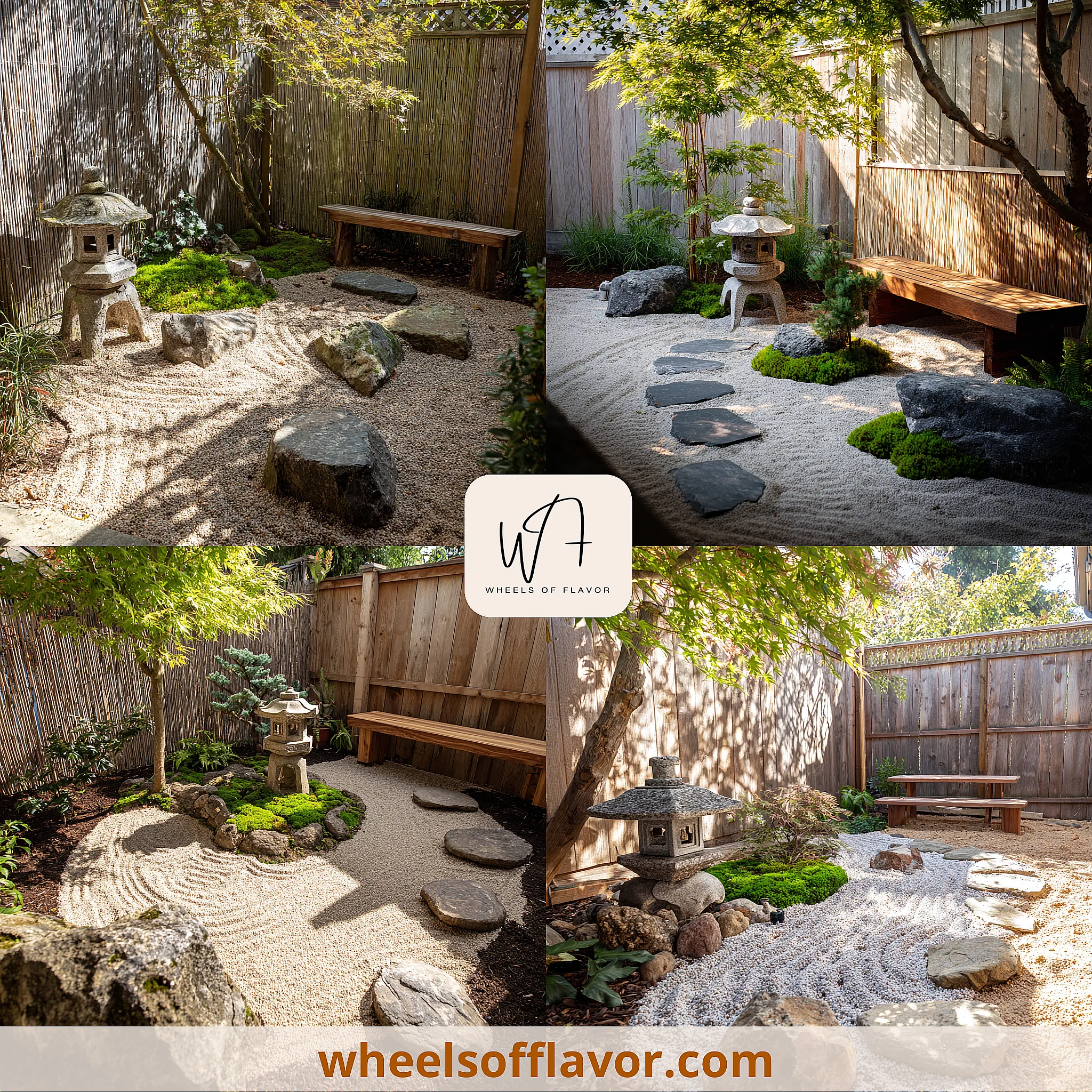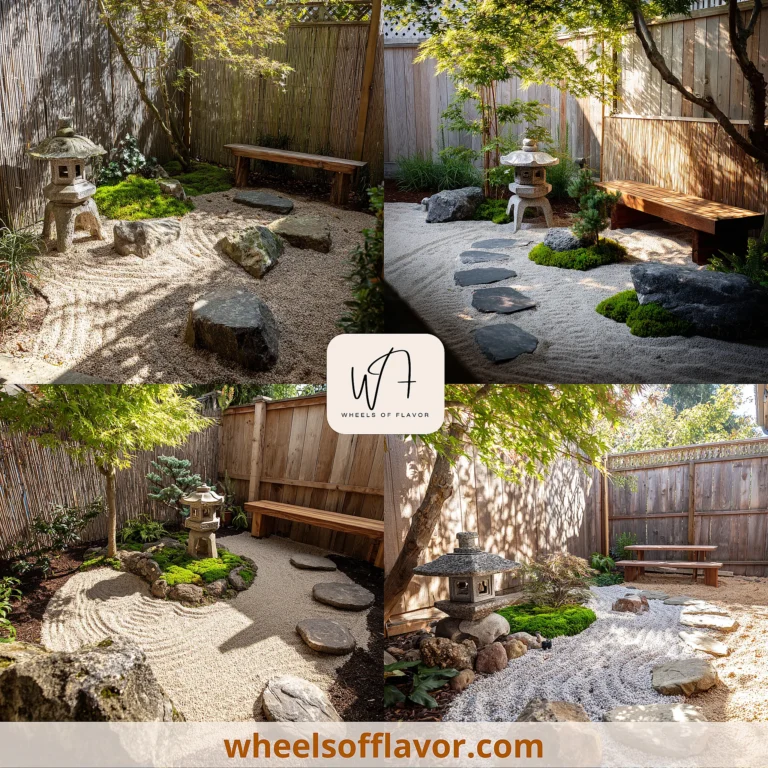
Creating a small Japanese garden is a wonderful way to bring tranquility and beauty into your home, even in limited spaces. These gardens, rooted in centuries of tradition, emphasize harmony with nature, simplicity, and mindfulness. Whether you have a tiny balcony, a compact backyard, or a small indoor area, incorporating elements like rocks, water features, and carefully chosen plants can turn any space into a peaceful retreat. In today’s fast-paced world, having a personal oasis where you can unwind and reconnect with nature is more important than ever. Small Japanese garden ideas offer practical and aesthetic solutions that enhance your well-being and elevate your living environment. By focusing on key principles such as balance, asymmetry, and natural materials, you can design a garden that not only looks stunning but also promotes relaxation and reflection. This article will guide you through various ideas to inspire your own project, helping you create a serene haven right at home. Embrace the art of Japanese gardening and discover how even the smallest spaces can be transformed into sources of joy and inspiration.
Essential Elements for Small Japanese Garden Ideas
When planning small Japanese garden ideas, start with the core elements that define this style. Rocks, or 'ishi,' are fundamental; they symbolize mountains and stability. Choose a variety of sizes and shapes, arranging them asymmetrically to create a natural, balanced look. Water features, such as small ponds or bamboo water spouts ('shishi-odoshi'), add movement and sound, enhancing the serene atmosphere. If space is too limited for a pond, consider a dry landscape ('karesansui') with raked gravel to represent water. Plants are another key component; opt for evergreen shrubs, moss, and bonsai trees that stay small and require minimal maintenance. Bamboo, with its graceful form, can be used for fences or accents. Pathways made of stepping stones ('tobi-ishi') guide the eye and invite exploration. Incorporate lanterns ('tōrō') for subtle lighting, placing them strategically to highlight features. Remember, simplicity is key—avoid clutter and focus on a few well-chosen elements. By integrating these essentials, your small Japanese garden will embody the principles of wabi-sabi (beauty in imperfection) and provide a calming space for daily life. For more inspiration on minimalist design, check out this guide from The Spruce, a trusted resource for home and garden tips.
Creative Layouts for Small Japanese Garden Ideas
Designing a layout for small Japanese garden ideas requires thoughtful planning to maximize space and impact. Start by defining the garden's purpose: is it for meditation, entertaining, or simply enjoyment? Common layouts include the courtyard style ('tsubo-niwa'), perfect for tiny urban spaces, where elements are arranged in a compact, enclosed area. Use vertical space by adding climbing plants or tall bamboo screens to create depth and privacy. Asymmetry is crucial; avoid symmetrical patterns to mimic nature's randomness. For example, place a rock group off-center with plants surrounding it, and use winding paths to make the space feel larger. Incorporate borrowed scenery ('shakkei') by framing views of distant trees or skies, blending your garden with the surroundings. In very small areas, consider a tabletop garden with miniature elements like tiny bonsai and small stones. Use containers or raised beds to define zones without taking up floor space. Materials like wood, stone, and bamboo keep the aesthetic authentic and cohesive. Always leave negative space ('ma') to allow the design to breathe and avoid overcrowding. By experimenting with these layouts, you can create a functional and beautiful garden that fits your space perfectly. For DIY tips on building such features, explore our internal guide on https://wheelsoflavor.com/diy-garden-projects.
Low-Maintenance Plants for Small Japanese Garden Ideas
Selecting the right plants is essential for successful small Japanese garden ideas, especially if you want a low-maintenance setup. Evergreen plants like Japanese maple ('Acer palmatum'), though small varieties exist, provide year-round color and structure. Moss is a classic choice for ground cover, thriving in shady, moist areas and adding a lush, green carpet. Bamboo species such as dwarf bamboo ('Pleioblastus') are ideal for containers or borders, offering height without invasive spread. Consider azaleas or camellias for seasonal blooms that add vibrancy without overwhelming the space. Bonsai trees, if you enjoy pruning, can be a focal point but require regular care; opt for slower-growing types like juniper for easier management. Succulents or sedums can adapt to drier conditions, mimicking the resilience found in nature. Group plants in odd numbers for a natural look, and use mulch to retain moisture and reduce weeds. Avoid fast-growing species that need frequent trimming. By choosing plants suited to your climate and space, you'll enjoy a garden that stays beautiful with minimal effort. This approach not only saves time but also aligns with the Japanese philosophy of harmony with nature, making your small garden a sustainable and peaceful retreat.
Conclusion
In summary, small Japanese garden ideas offer a powerful way to create a serene and inspiring outdoor space, no matter how limited your area may be. By focusing on essential elements like rocks, water features, and carefully selected plants, you can design a garden that promotes relaxation and connection with nature. The creative layouts and low-maintenance plant choices discussed ensure that your project is both beautiful and practical, fitting seamlessly into your lifestyle. As you embark on this journey, remember that the goal is not perfection but harmony and mindfulness. These gardens encourage us to slow down, appreciate the simple things, and find joy in our surroundings. Looking ahead, consider expanding your garden with seasonal changes or incorporating more sustainable practices, such as rainwater harvesting or native plantings. Share your creations with others to spread the peace and beauty of Japanese garden design. Start small, experiment, and watch your space transform into a personal haven that brings daily calm and inspiration.
Frequently Asked Questions
Q: What are the best plants for a small Japanese garden in a shady area?
For shady areas, opt for plants that thrive in low light, such as moss, hostas, Japanese forest grass ('Hakonechloa macra'), and ferns. These species add texture and greenery without needing full sun, aligning perfectly with the tranquil aesthetic of Japanese gardens.
Q: How can I incorporate water features in a very small space?
In tight spaces, use compact water features like a small bamboo water spout ('shishi-odoshi') or a tabletop fountain. Alternatively, create a dry riverbed with raked gravel to symbolize water, which requires no maintenance and still evokes the calming essence of a Japanese garden.
Q: Are Japanese gardens expensive to create and maintain?
Not necessarily! Japanese gardens can be budget-friendly by using locally sourced rocks, DIY projects for pathways, and low-maintenance plants. Regular upkeep involves simple tasks like raking gravel and pruning, making it affordable over time. Start with a few key elements to keep costs down.

